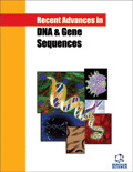Abstract
Endogenous and exogenous photosensitizers induce DNA damage, leading to carcinogenesis. Further, DNA is an important target biomacromolecule of photodynamic therapy (PDT) for cancer. Since the solar-induced DNA damage and PDT reaction occur in a complex biological environment, the interaction between biomolecule and photosensitizer is important. In this study, we examined the effect of a DNA microenvironment on the photosensitized reaction by watersoluble porphyrin derivatives, tetrakis(N-methyl-p-pyridinio)porphyrin (H2TMPyP) and its zinc complex (ZnTMPyP). In the presence of a sufficient concentration of DNA, H2TMPyP mainly intercalates to calf thymus DNA, whereas ZnTMPyP binds into a DNA groove. An electrostatic interaction with DNA raises the redox potential of the binding porphyrins. This effect suppressed the photoinduced electron transfer from an electron donor to the DNA-binding porphyrins, whereas the electron transfer from the porphyrins to the electron acceptor was enhanced. In the case of hydrophobic electron acceptors, static complexes with porphyrins were formed, making rapid electron transfer possible. Since the interaction with DNA cleaved this complex, the electron transfer rate was decreased in the presence of DNA. The microenvironment of a DNA strand may assist or inhibit its oxidative damage by photoinduced electron transfer through an electrostatic interaction with binding photosensitizers and the steric effect.
Keywords: Cationic porphyrin, DNA, electron transfer, microenvironment, photosensitized reaction, quinone, quencher.
 17
17

